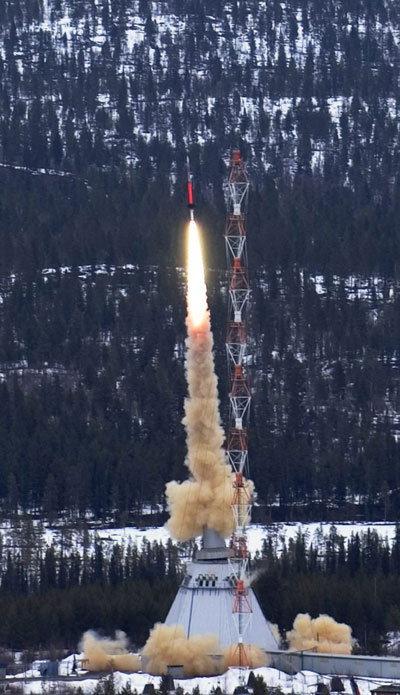Britain's Skylark Rocket Engine Flies Final Mission

STOCKHOLM, Sweden (AP) -- The British Skylark rocket engine saw its final launch Monday in northernmost Sweden after rocketing into space more than 400 times over five decades.
The last Skylark blasted off at 7 a.m. when the unmanned sounding rocket Maser 10 was launched into space from the Esrange pad, said Johanna Bergstrom-Roos, a spokeswoman for the Swedish Space Corporation.
The launch was originally scheduled for Sunday, but was delayed because of bad weather.
"Everything went well," with the launch and the flight, Bergstrom-Roos said, adding that the landing of the payload was rougher than expected because of a parachute that failed to open properly.
The Skylark engine, which is no longer in production, will be replaced by a Brazilian engine this fall. Skylark engines have been used 96 times for launching sounding rockets from the pad at Esrange and 440 times in total.
Maser 10 is part of the Maser sounding rocket program for research in microgravity -- a state of near-weightlessness -- managed by the SSC.
The payload consisted of two biological experiments and three experiments in fluid physics.
Get the Space.com Newsletter
Breaking space news, the latest updates on rocket launches, skywatching events and more!
The 42.2-foot rocket flew for about 16 minutes, and reached a height of about 158 miles. The microgravity period lasted six minutes, Bergstrom-Roos said.
Despite the rough landing, "it looks like all the (biological) test samples are intact," she said.
The microgravity environment gives researchers a unique opportunity to study the fundamental states of matter -- solids, liquids and gases -- and the forces that affect them.
In microgravity, researchers can isolate and control the forces, giving them access to test results that haven't been influenced by the earth's gravity.
The Esrange launching pad is located near Kiruna, some 765 miles north of the capital, Stockholm.
Join our Space Forums to keep talking space on the latest missions, night sky and more! And if you have a news tip, correction or comment, let us know at: community@space.com.









